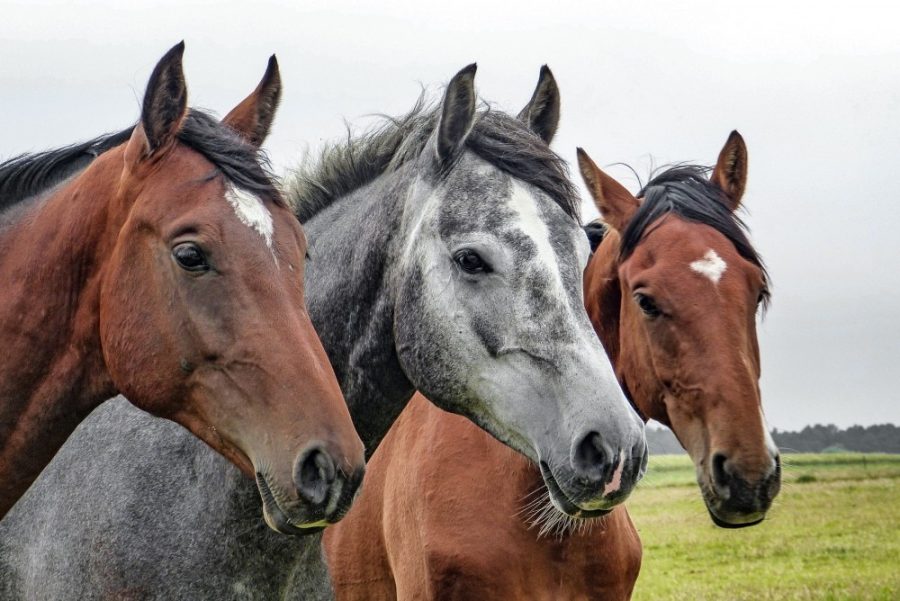A variety of fascinating scientific discoveries were made just shy of Independence Day, ranging from equine genetics to advances in how we receive flu shots.
Drowning not the end for wildebeest
A team of ecologists from Millbrook, N.Y.’s Cary Institute of Ecosystem Studies have discovered that the corpses of wildebeest who drown crossing rivers provide key nutrients to the environment for years.
The discovery was made when the team discovered a water quality difference in the Mara River of Tanzania based on the kinds of animals found in different locations along the river.
Many dead wildebeest were found in one particular area, due to specific migratory patterns.
Thousands drown every year during the strenuous journey.
However, it was discovered that the wildebeest corpses contribute more than just a ready meal for alligators and scavengers; the research team tested waters where large numbers of wildebeest corpses were found, counted the bodies and observed how they decayed.
As the bodies decompose, they release rich nutrients into the underwater food web.
The bones left behind take years to decompose, growing algae and fungi that fish and other small creatures feed on. This could last for as long as seven years, according to the researchers.
It is possible that other mass migrations, such as caribou in Canada, could be having the same effect on their ecosystem.
RELATED: Endangered pupfish given a new home
Flu patch could increase ease and access of flu vaccines
A recent advancement in vaccine technology could make it easier to distribute and apply yearly flu shots, particularly in underdeveloped countries where supplies and training are in short supply.
The patch is similar in appearance to a Band-Aid and is applied to the wrist.
Microneedles containing the vaccine, sugar and polyvinyl alcohol press into the skin, dissolving and releasing the components into the body.
The patch was tested against a regular flu shot. One-hundred healthy adults either received the shot or applied the vaccine patch. All seemed to have similar levels of resistance to the flu, though only those who received the shot reported feeling pain.
Participants experienced similar side effects no matter how they received the flu vaccine.
While researchers feel optimistic about the patch’s future, which could be modified for other viruses and diseases, there is still research and testing that needs to be done before it will be seen on store shelves.
RELATED: UA immunologist answers questions on why you should get the flu vaccination
Genetic research uncovers mystery of horse breeds
Research out of the University of Veterinary Medicine, Vienna has uncovered the origin story of modern horses.
By studying over 50 horse breeds, researchers have discovered that the Y chromosomes of today’s horses can be traced back hundreds of years.
The donors were Arabian and Turkoman stallions, whose genes can be found in all modern stallions.
Interestingly, the three stallions considered responsible for the existence of the English Thoroughbred were found to be descended from the Turkoman horses, now extinct.
This research will allow scientists to further understand when this genetic shift occurred and when various horse breeds came into existence.
Dragonfly wings could be living appendages
Rhainer Guillermo Ferreira, from Kiel University in Germany, had discovered that the wings of male Zenithoptera dragonflies have a tracheal respiratory system that may indicate the wings, long thought to be lifeless, are indeed a living part of the insect.
Ferreira scanned the wings of the dragonflies using an electron microscope and saw an unusual system hidden within the wing structures. Several other entomologists examined the image as well and agreed with Ferreira’s assessment: A respiratory system within the wing, indicating that the appendage was actually alive and facilitating oxygen.

This discovery is the first of its kind, and offers an explanation for the dragonfly’s bright blue wings.
Used to attract mates and defend territory, the wings lack any sort of blue pigment, meaning that the respiratory system could provide the oxygen necessary for the color.
The oxygen is used to create a system that efficiently reflects and magnifies blue light while absorbing all other colors.
Ferreira’s discovery requires more testing and exploration, but it stands to contest a long-accepted fact among entomologists: wings cells die in an effort to support the structuring of the wing, leaving them as alive as a fingernail or a strand of hair.
Follow Nicole Morin on Twitter.









